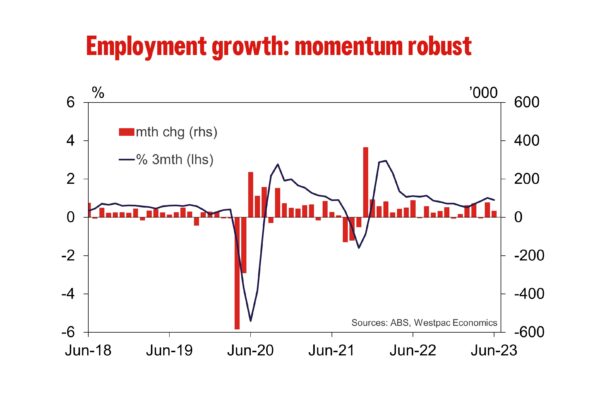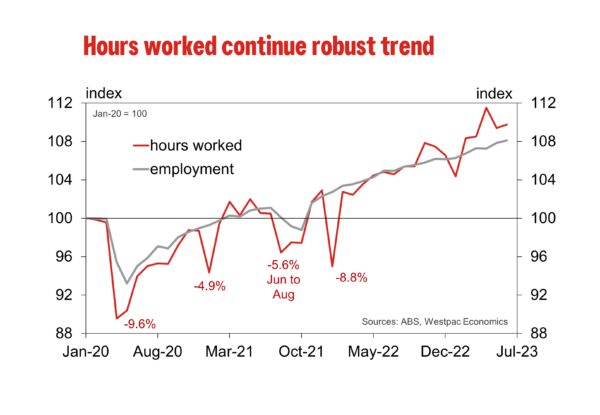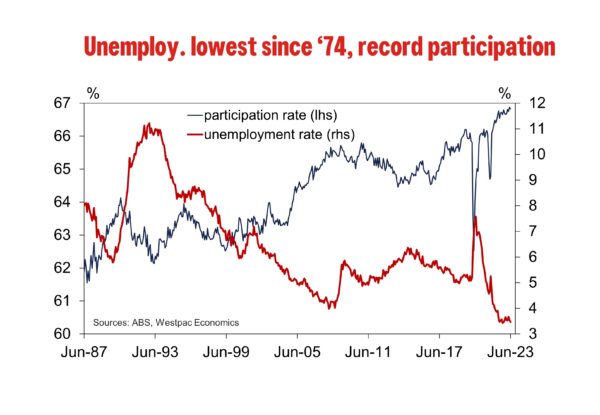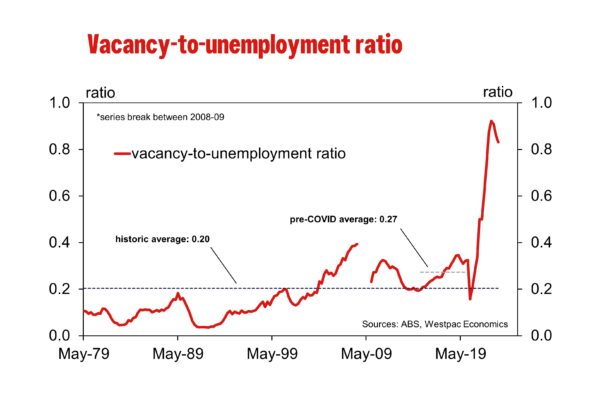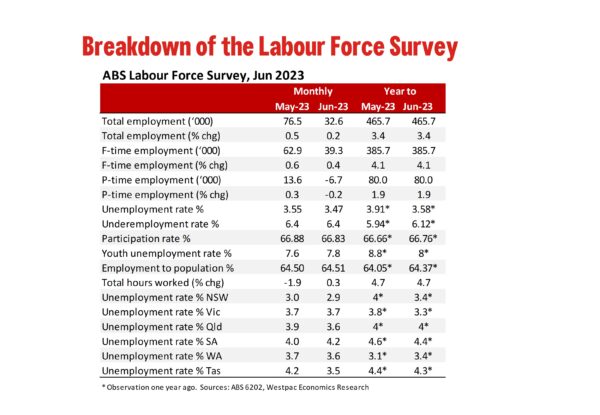Total employment: +32.6k from +76.5k (revised up from +75.9k); unemployment rate: 3.5% from 3.5% (revised down from 3.6%); participation rate: 66.8% from 66.9%.
In June, employment gained 32.6k, or 0.2%, slightly higher than Westpac’s forecast for a +25k lift, but well above the market median forecast for a more modest +15k increase. Over the first half of 2023 the pace of employment growth has held up to a remarkable degree, the three-month average change still above +40k/mth. This is much higher than the pace seen over the second half of 2022 (+26k/mth), and almost exactly on par with the pace seen over last year as a whole (+42k).
While the pace of employment growth has shown very few signs of letting up, this has not compromised the quality of jobs growth being seen. Around 86% of new jobs over the last six months have been for full-time work as opposed to part-time work, full-time having risen +218.4k year-to-date compared to the +35.9k year-to-date gain for part-time.
This is not wholly different to the dynamics seen during the earlier stages of employment’s recovery from COVID-19, but it stands out in contrast to the pre-pandemic years, when full-time employment constituted only a slighter majority of jobs growth (~60%).
Emphasising this point further, seasonally adjusted hours worked remains in a strong up-trend, once again exceeding the growth in employment with a 0.3% lift in June. Having risen 3.0% year-to-date, the gains in hours worked is well above what observed over the same period last year (1.9%).
The employment-to-population ratio, after having reached a fresh record high in May, managed to nudge even slightly higher in June, albeit holding flat to one decimal place at 64.5%. The participation rate eased only slightly from its historic high in May, from 66.9% to 66.8%, seeing the labour force grow by a solid 21.8k in June. With employment also lifting strongly during the month, the unemployment rate held near fifty-year lows, at 3.5%. In fact, June’s unemployment print is the second-lowest reading in this cycle, only 0.04ppt above the low observed in October 2022.
Other indicators of labour market slack were also in line with this sentiment. The underemployment rate – which measures those who are employed but wish to work more hours – held at 6.4% in June. Benefiting from the fall in unemployment, the underutilisation rate – which combines unemployment and underemployment – fell slightly to 9.9%.
Also worthy of note, the unemployment rate in NSW fell 0.1ppt to a record low of 2.9%. Declines were also seen in Qld (–0.3ppt to 3.6%); WA (–0.1ppt to 3.6%) and Tas (–0.7ppt to 3.5%), while the unemployment rate held flat in Vic (3.7%) and nudged up slightly in SA (+0.2ppt to 4.2%).
Overall, the June Labour Force Survey has provided yet another robust and well-rounded read on the labour market. The tone of the survey at this stage is consistent with our labour market view, with the unemployment rate expected to rise to only 4.0% by the end of this year, given the near-term resilience from labour demand and robust growth in labour supply.




